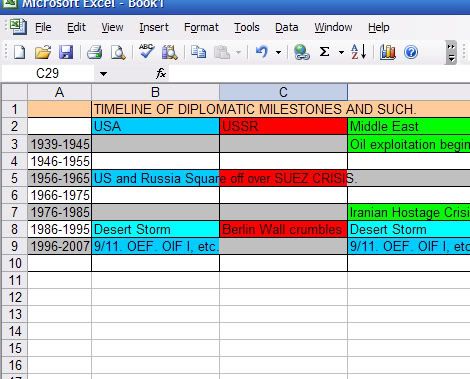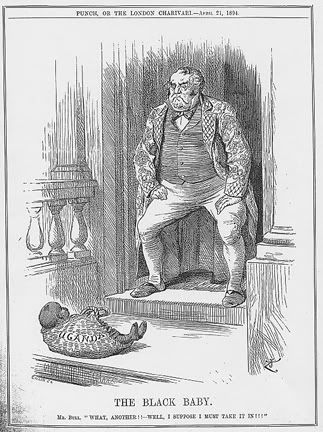First off is the interesting exercise called "An Unusual Incident", from the Queensland public school system. The exercise entails the study of data organized on a spreadsheet to discern what patterns are evident in the data that would identify the specific incident.
While this exercise doesn't entail the explicit usage of Excel but rather a pre-made spreadsheet, it could be adapted to be an "example", before allowing the students (in groups, or individually) to create their own data sets surrounding an incident they've studied recently (a Civil War battle, population patterns in the first year after the implementation of the Homestead Act, etc.). Upon completion, the groups could exchange their data sets (created with Excel) with each other, in order to try and guess the event.
Second, is an interesting exercise called the Amazing Autobiography, and is brought to us by the Microsoft Corporation. Though the Amazing Autobiography is meant to be a language arts exercise, if adapted, it could help address Ohio Benchmark Standards that require comparative thinking, such as the guidance set forth in Benchmark/Indicator C (Gr. 9-10) ("Analyze the connections between World War II, the Cold War and contemporary conflicts").
The Amazing Autobiography is originally intended to help students understand narrative writing, first by examining the autobiographies of famous personages, and then following suit using Excel and Powerpoint as media for a similar presentation.
The Excel component requires students to map out their own lives, with a timeline composed of Milestones from their own lives.
This could be adapted into a Social Studies history (for example) by having the students map out the lives of John F. Kennedy, Nikita Khrushchev, and Ho Chi Minh- to see what types of milestones occurred in each of their lives, providing perhaps some type of basis for a further discussion on how formative events shaped their personalities and leadership styles.
Furthermore, Excel timeline mapping could track the shape of conflicts, and be "superimposed" on the governmental policy decisions of the Superpowers to show how future conflicts are shaped. For example, regarding Kennedy, The Bay of Pigs failure could be linked to a weakening of the relationship between the Joint Chiefs of Staff (JCS) and the President (POTUS). This could then be coupled with a timeline measurement of the strengthening between the relationship of the POTUS the Secretary of Defense (SecDef)...and could also be used as a basis for comparison to examine how decision making processes occurred between the JCS, SecDef and POTUS in regards to the planning of tail end, and post-Cold War conflicts, such as the Operation Eagle Claw (Iranian hostage rescue attempt), Grenada, the American intervention in the Kosovo conflict, and the planning of Operation Enduring Freedom and Operation Iraqi Freedom I.
P.S.(Not to mention tracking how Soviet policy in Afghanistan from the Cold War on up, partially created the conditions for the accession of the Taliban.)
P.P.S.! (Also! You could track milestones of diplomatic engagement between the USA, USSR and the Middle East from WWII through to right now! Tengo el entusiasmo! )

OK. It's a bit of a stretch, but I'm sure with some planning, it could work.
See you in class,
H

